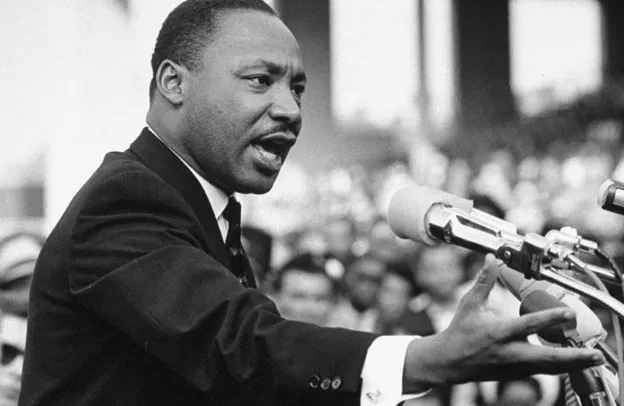Building African Diaspora Memory Through Storytelling – The Diaspora Storytelling Series

Storytelling plays a crucial role in preserving and passing down the memory and cultural heritage of the people of the African diaspora. Having interviewed hundreds of people of African descent in the diaspora over the years, it has become obvious to me that we truly need to keep promoting the building of our memory.
Want to learn more about storytelling? Start by downloading the first chapter of The Storytelling Series for Small Businesses.
Now, here are five ways in which African diaspora communities can build their memory through storytelling:
Leveraging Oral Tradition:
Oral tradition is a powerful means of storytelling within African diaspora communities. Elders and community members share stories, myths, and legends verbally, passing down history, values, and cultural practices to younger generations. These stories often include accounts of migration, survival, and resilience, providing a direct link to the past.
Oral tradition is an essential part of African heritage, helping maintain a connection to ancestral roots and reinforcing a sense of identity and belonging among diaspora members.
Written Literature:
African diaspora writers, poets, and authors have contributed significantly to the global literary canon. Through novels, poetry, essays, and autobiographies, they explore the experiences of African diaspora communities, their struggles, achievements, and resilience. Works like “The Souls of Black Folk” by W.E.B. Du Bois or “Beloved” by Toni Morrison are examples of such literature.
Written literature serves as a tangible record of the African diaspora experience, allowing for a deeper exploration of history and culture, and often challenging prevailing narratives.
Visual Storytelling:
Visual storytelling includes art, photography, film, and documentaries that capture the experiences of the African diaspora. Artists and filmmakers create powerful narratives that depict historical events, social issues, and personal journeys. Films like “12 Years a Slave” and artworks like those by Jean-Michel Basquiat are examples of visual storytelling.
Visual storytelling provides a multi-sensory way to engage with history and culture, making it more accessible and relatable to a broader audience.
Digital Storytelling and Social Media:
In the digital age, African diaspora communities have embraced online platforms and social media to share their stories. Blogs, podcasts, YouTube channels, and social media accounts provide spaces for personal narratives, and discussions on culture, identity, and issues affecting the diaspora.
The following is a clip from an article: Digital Diaspora: Building a New African Storytelling Tradition: “Being a creator in the African Diaspora means looking back. We look back at the stories we heard from our elders. As a child of the Tiv tribe in Nigeria, I heard a lot of folk tales- they were about animals, humans, and sometimes magic.”
You can read the full article at Senongo.net.
Digital storytelling not only reaches a global audience but also fosters a sense of community among diaspora members. It allows for the real-time exchange of experiences, challenges, and triumphs, helping to build a collective memory.
Inter-generational Storytelling Workshops
Organizing workshops and events where older generations can share their stories with younger members of the African diaspora community is a powerful way to ensure the continuity of memory. These workshops can involve storytelling, workshops on traditional practices, and discussions on cultural heritage.
There are a lot of storytelling initiatives by the African diaspora out there such as Black Stories Matter at Tmiproject.org/blackstoriesmatter/, Black Storytelling Workshop at Kuumbastorytellers.org/black-storytelling-workshop/ or African-American Storytelling Workshop at Chettergalloway.com/programs.php. These are only a few places where you can learn more about African diaspora storytelling and workshops.
Such workshops facilitate direct interaction between generations, ensuring that cultural knowledge, history, and traditions are passed on in an engaging and personal manner. It strengthens the bond between generations and reinforces a sense of pride in one’s heritage.
Incorporating these storytelling methods into the African diaspora community can help preserve and build a collective memory that honors the past while inspiring future generations to carry forward their cultural heritage and experiences.
Why Building African Diaspora Memory is important
Building and preserving the memory of the African diaspora is crucial for several reasons:
- Preservation of Cultural Heritage: The African diaspora represents a diverse array of cultures, languages, traditions, and histories. Preserving these cultural elements through memory ensures that they are not lost to time and assimilation. Building African diaspora memory helps maintain a connection to ancestral roots and identity.
- Resistance to Cultural Erosion: African diaspora communities have often faced challenges to their cultural identity due to historical factors such as slavery, colonization, and forced migrations. Building memory will help resist the erosion of cultural practices and values, ensuring they are passed down to future generations.
- Promotion of Resilience and Identity: The memory of the African diaspora includes stories of resilience, resistance, and triumph over adversity. These stories serve as a source of inspiration and strength for diaspora communities, fostering a sense of identity and belonging.
- Challenging Dominant Narratives: The memory of the African diaspora can challenge and counteract prevailing narratives that have marginalized or misrepresented these communities. It provides an alternative perspective on history and contemporary issues, fostering a more inclusive and accurate understanding.
- Education and Awareness: Building memory through storytelling contributes to educating both diaspora members and the wider global community about the history and contributions of African diaspora communities. It raises awareness about the struggles they have faced and the significance of their cultural heritage.
- Fostering Unity and Solidarity: A shared memory can help foster unity and solidarity within African diaspora communities. It creates a sense of common purpose and shared experience, which can be harnessed for collective action and advocacy.
- Cultural Enrichment: The memory of the African diaspora enriches global culture by adding diverse perspectives, art, music, literature, and culinary traditions. This cultural exchange contributes to a more vibrant and interconnected world.
- Healing and Reconciliation: Acknowledging and preserving the memory of historical injustices, such as slavery and colonization, is an essential step towards healing and reconciliation. It allows for the acknowledgment of past trauma and the pursuit of justice and equity.
- Empowerment: The memory of the African diaspora empowers individuals and communities by giving them a sense of agency and ownership over their narrative. It allows them to define their own history and future on their terms.
- Interconnectedness: Building and sharing the memory of the African diaspora highlights the interconnectedness of humanity’s history. It shows that the experiences of African diaspora communities are not isolated but part of a broader global story of migration, adaptation, and resilience.
Conclusion
In conclusion, building the memory of the African diaspora is essential for preserving cultural heritage, fostering resilience and identity, challenging dominant narratives, educating, and raising awareness.
Building a good memory of the African diaspora would also help to promote unity, contribute to global culture, facilitate healing, and empower communities. It is a way of honoring the past while shaping a more inclusive and equitable future.
Want to learn more about storytelling? Start by downloading the first chapter of The Storytelling Series for Small Businesses.






